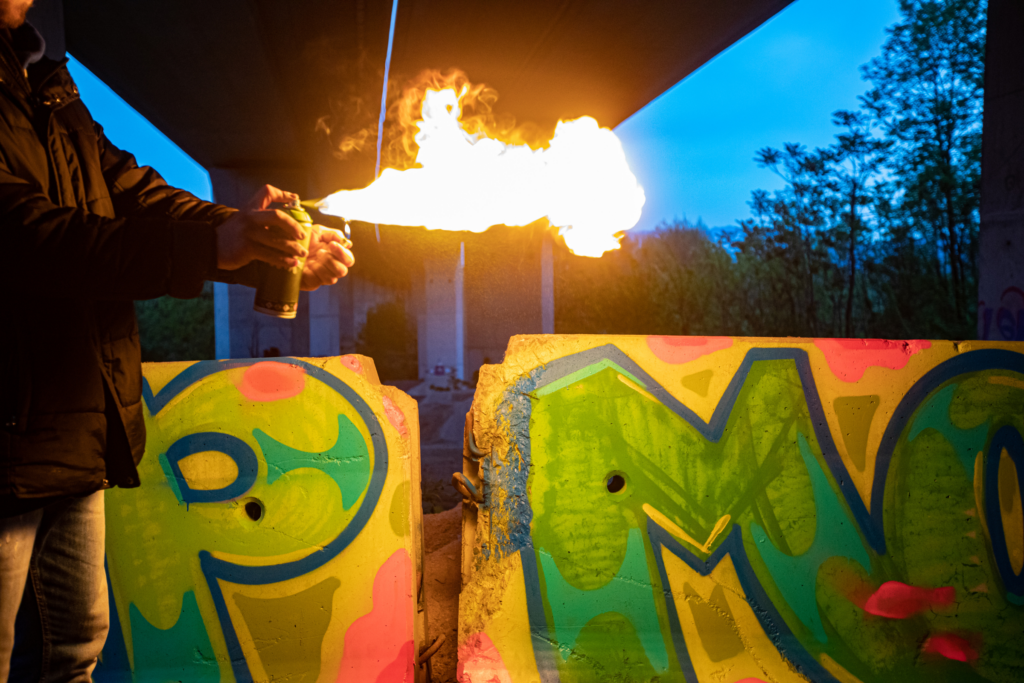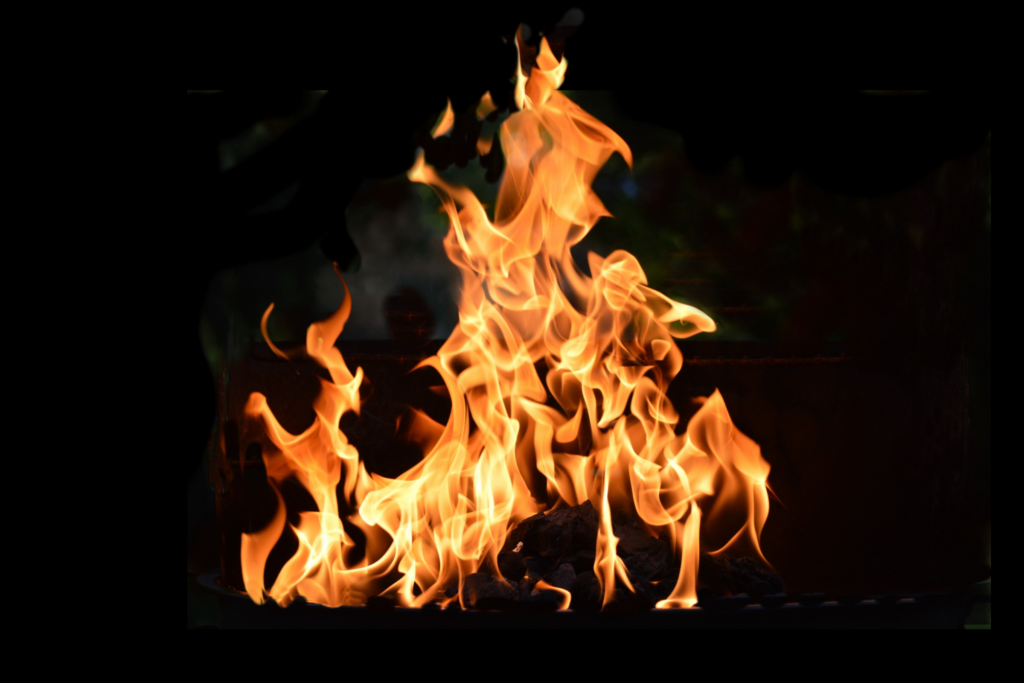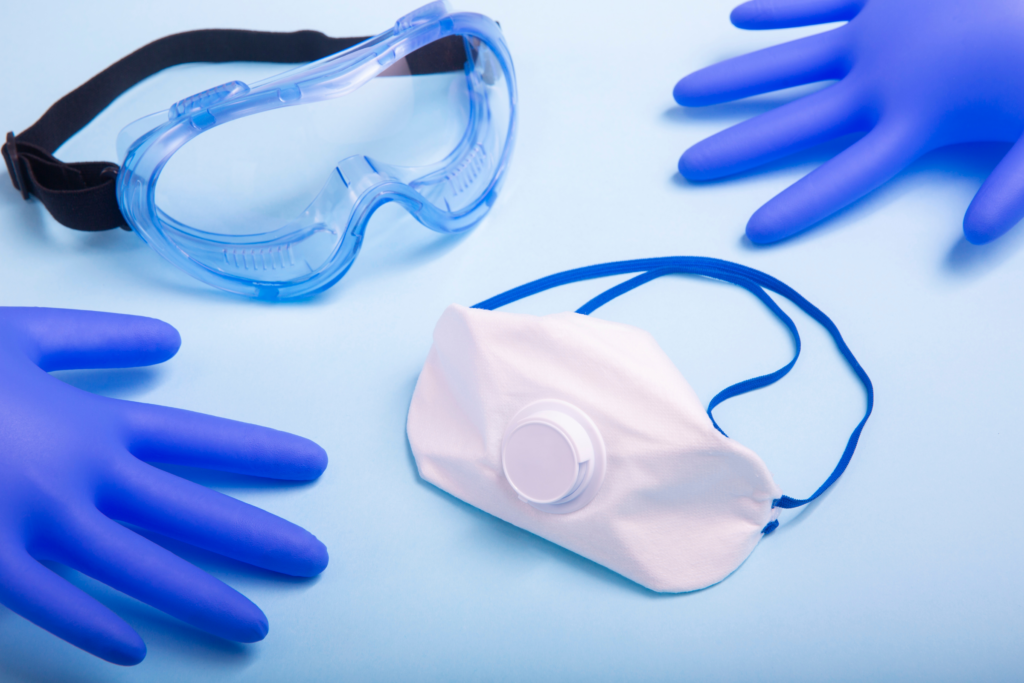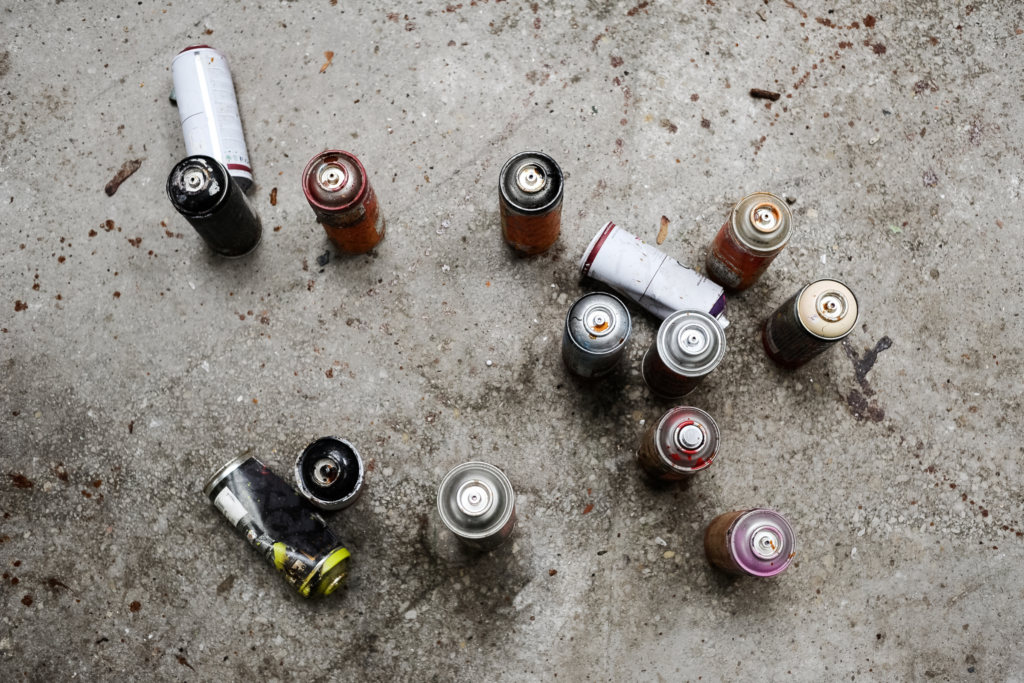Is Spray Paint Flammable? (With Important Safety Precautions)
Spray paint is a popular and versatile DIY tool used for a variety of projects, from upcycling furniture to creating striking artwork. However, one important aspect to consider when working with spray paint is the flammable nature of certain types. Let’s talk a bit more about why spray paint is flammable in the first place and what we need to do to protect ourselves!
Most types of spray paint are flammable because they include solvents such as butane or propane which are highly flammable and should never be used around open flames. Check the spray paint can for hazardous material warns that indicate the level of flammability on that particular product.
Different types of spray paint may have varying levels of flammability based on their composition. Typically, spray paints containing solvents like butane or propane are more flammable than water-based paints, which are generally considered non-flammable. It is essential to know the properties of the specific spray paint being used and follow the safety guidelines provided on the can.
Spray paint’s flammability properties
- Chemical composition
- Ignition temperature
- Flame spread

Composition
Spray paint is a combination of various components, including solvents, pigments, and propellants. The solvents are responsible for dissolving other ingredients, while pigments provide the color. The propellants typically include butane and propane, two highly flammable gases.
These gases pressurize the aerosol can and evaporate rapidly when the paint is sprayed out. The presence of these flammable components makes spray paint flammable when it is wet.
Ignition temperature
The ignition temperature of spray paint (the temperature at which it will actually catch fire) differs according to which specific solvent or propellant is used in the paint’s ingredients list. For instance, some spray paints containing butane or propane have a lower ignition temperature, making them highly flammable.
When using spray paint, it’s crucial to adhere to the safety precautions, such as maintaining a well-ventilated area and keeping a safe distance from heat sources. This reduces the risk of combustion due to the flammable nature of spray paint.

Flame spread
The rate at which flames spread on a spray-painted surface depends on various factors, such as the paint type, application method, and surface material. Proper storage and handling of spray paint are essential in minimizing the risks associated with its flammability.
For instance, it is recommended to store spray paint in flammable storage cabinets to mitigate the possibility of fire hazards. In addition, quick and appropriate measures must be taken to control the spread of flames in the event of a fire involving spray paint.
Always prioritize safety and adhere to the guidelines provided by the manufacturer when using spray paint to prevent any fire hazards related to its flammable properties.
How to properly store spray paint for safety
- Precautions
- Regulations
- Guidelines

Precautions
When storing spray paint and other flammable materials, it’s important to take certain precautions to ensure safety. Keep these materials in a cool, dry place away from heat sources, as heat can increase the risk of a fire.
Also, store them in containers that are clearly labeled and made of fire-resistant materials. Make sure that the containers are tightly sealed to prevent leaks or spills that could lead to a fire or other dangerous situations.
Regulations
Various regulations govern the proper storage and handling of flammable materials like spray paint. In the United States, 29 CFR 1910.106 is a key standard, which is primarily based on the National Fire Protection Association’s (NFPA) publication NFPA 30, Flammable Liquids Code.
This standard applies to the handling, storage, and use of flammable liquids with a flash point below 200ºF. Make sure to familiarize yourself with the specific regulations in your area to ensure compliance.
Guidelines
In addition to government regulations, there are general guidelines that can help ensure the safe storage and handling of hazardous materials like spray paint. The U.S. Environmental Protection Agency (EPA) considers certain leftover household products, such as spray paint, to be household hazardous waste.
These products must be stored and disposed of properly to prevent harm to the environment and public health. Always follow these best practices:
- Keep flammable materials separate from other household items.
- Dispose of empty containers and leftover materials at a designated household hazardous waste facility.
- Do not pour hazardous waste down the drain or throw it in the trash.
- Only purchase the amount of hazardous materials you need to minimize waste and storage.
By following these precautions, regulations, and guidelines, you will reduce the risk of accidents and keep yourself and others safe when dealing with flammable materials like spray paint.
Safety measures when using spray paint
Spray paint can be flammable, and it’s essential to take safety precautions when using it. By following the proper safety measures, you can minimize the risk of fire, explosions, and health hazards associated with flammable spray paints.
Proper ventilation
When using spray paint, always operate in a well-ventilated area to prevent the buildup of flammable vapors. This helps reduce the risk of fire or explosions due to the accumulation of flammable gases. Open windows and doors and use fans or exhaust systems to disperse vapors.
Avoid using spray paint in confined spaces and ensure fresh air is flowing throughout the workspace. According to OSHA, controlling hazards during paint operations is crucial to ensure workers’ safety.

Personal protective equipment
Wearing appropriate personal protective equipment (PPE) is essential when applying spray paint, as it protects you from inhaling harmful chemicals and reduces skin exposure.
PPE for spray painting may include:
- Respirator: Use a respirator or face mask specifically designed for spray painting to prevent inhaling paint particles and fumes. Ensure it fits snugly and is the correct type for the specific product you’re using.
- Safety goggles: Wear safety goggles to shield your eyes from paint particles and liquid splatters.
- Protective clothing: Cover your skin with long sleeves, pants, and gloves to minimize skin exposure to chemicals. Opt for clothes made from materials resistant to chemicals and easy to clean.
- Hearing protection: While not directly related to flammability, using hearing protection can be essential if using spray painting equipment that generates loud noises.
Remember always to read and follow the instructions provided on the spray paint can and adhere to any applicable safety guidelines to ensure a safe and successful paint job.

Reducing fire hazards and prevention
Spray paint is flammable, and using it can present fire hazards that require proper safety measures. The primary hazards of spray paint are due to the volatile organic compounds (VOCs) they contain, which evaporate quickly and can catch fire under the right conditions.
Safety equipment
To ensure safety and minimize fire hazards while using spray paint, the following safety equipment is crucial:
- Ventilation: Work in a well-ventilated area to disperse flammable fumes from the spray paint. This reduces the risk of fire or explosion caused by a build-up of VOCs in the air.
- Respirators: Wear a respirator to protect against inhaling harmful solvents and reduce the risk of respiratory health issues.
- Fire Extinguishers: Make sure to have a fire extinguisher nearby, rated for Class B fires (flammable liquids). This can help you quickly respond in the event of a fire or explosion.
- Protective Clothing: Wear long sleeves, closed-toe shoes, and gloves to protect your skin from exposure to solvents and other hazardous materials present in spray paint.

Reaction with other chemicals
Spray paint can react with certain chemicals, increasing the risk of fire or explosion:
- Oxidizers: Avoid mixing spray paint with any oxidizing agents, as this can create a highly flammable or explosive mixture. Examples of oxidizing agents include chlorine, bleach, nitric acid, and hydrogen peroxide.
- Acids and Bases: Spray paint solvents can react with strong acids or bases, producing heat and potentially causing a fire.
- Incompatible Materials: Keep spray paint away from heat sources, sparks, open flames, or hot surfaces. These can ignite the paint and lead to a fire or explosion.
How to properly dispose of spray paint
Spray paint cans, even when seemingly empty, still contain residual product and propellant, which can be flammable and pose a risk. To ensure safe disposal, it’s important to follow a few guidelines:
- Make sure the can is empty: Spray a piece of cardboard to confirm there’s no paint left in the can.
- Do not puncture or crush the can: Doing so may cause the can to ignite or explode.
- Follow local regulations: Check your local waste management facility’s guidelines for proper disposal or recycling options.

How to properly recycle spray paint
Recycling options for spray paint cans depend on the type of paint and the can:
- Paint: The paint itself is not biodegradable, but latex paint usually doesn’t pose a risk to human health or the environment due to its ability to degrade over time.
- Cans: Aerosol cans are often recyclable, but the aerosolized nature of spray paint makes it difficult to recycle properly.
To recycle the cans, follow your local recycling facility’s instructions. Keep in mind that cans must be completely empty and free of any residual paint to avoid potential hazards.
Is spray paint flammable – key takeaways
- Spray paint flammability depends on its composition, with solvent-based paints being more flammable than water-based paints.
- Proper safety measures, such as using well-ventilated spaces, should be taken when working with spray paint.
- Always consult the guidelines provided on the spray paint can for information on flammability and proper handling.
Frequently asked questions about spray paint flammability
Is spray paint flammable when dry?
Dried spray paint is significantly less likely to be a fire hazard compared to wet spray paint. When the paint is wet, it contains volatile organic compounds (VOCs) that evaporate quickly and can catch fire.
Once the solvents have evaporated and the paint has dried, the risk of flammability decreases significantly.
Can spray paint fumes cause an explosion?
Spray paint fumes contain VOCs, which are gases that evaporate quickly and can catch fire. If these fumes are exposed to an open flame or a spark, there is a possibility of an explosion.
However, this risk mainly exists only when the area is not well-ventilated, and fumes have built up to a high concentration. It is always recommended to spray paint in a well-ventilated area to minimize the risk of explosion.
Are spray paint fumes toxic?
Yes, spray paint fumes can be harmful to your health if inhaled or absorbed through the skin. The solvents used in the paint can cause irritation to the respiratory system, eyes, and skin. In high concentrations, these fumes can lead to headaches, dizziness, and even more severe health problems. It is essential to use proper protective equipment, such as a mask and gloves, when working with spray paint.
What is the difference between combustible and flammable?
The terms “combustible” and “flammable” are used to describe the ease with which a substance can catch fire or ignite. The main difference lies in their flashpoints. The flashpoint is the temperature at which a substance can vaporize and form an ignitable mixture with air.
Flammable substances have a flashpoint below 100 degrees Fahrenheit (37.8 degrees Celsius), while combustible substances have a flashpoint between 100 and 200 degrees Fahrenheit (37.8 to 93.3 degrees Celsius).
Are latex paint fumes flammable?
Latex paint is water-based and generally considered less flammable than oil-based paints. However, some latex paints contain small amounts of VOCs, which can make the fumes flammable in very high concentrations. It is essential to ensure proper ventilation when working with any type of paint to reduce the risk of fire and maintain good air quality.
Is oil paint flammable when dry?
When dry, oil paint is less flammable than when it is wet. Wet oil paint contains solvents, such as butane and propane, which are highly toxic and flammable.
Once the paint has dried and the solvents have evaporated, the flammability is significantly reduced. However, it is still crucial to handle and store oil paints with care to minimize the risk of fire.
Let Us Know How We’re Doing!
Did this expertly prepared resource answer your question?
Do you have another question about home maintenance, home improvement projects, home appliance repair, or something else?
Get more information, send in questions and keep the discussion going by contacting the I’ll Just Fix It Myself company customer service team at at 1-800-928-1490 or Email us at [email protected]
